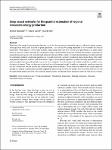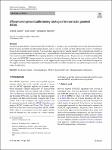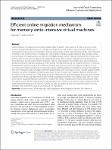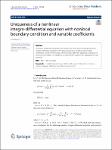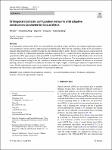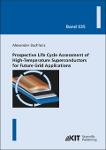Search
Author
- Osman, Ahmed I. (5)
- Daqing, Ma (3)
- Jorgensen, Ed (3)
- Li, Yan (3)
- next >
Subject
- kinh tế (26)
- Economics (12)
- programming (10)
- XRD (10)
- next >
Date issued
- 2020 - 2025 (2128)
- 2010 - 2019 (129)
- 2000 - 2009 (9)
- 1999 - 1999 (1)
Has File(s)
Search Results
Wind and solar energy forecasting have become crucial for the inclusion of renewable energy in electrical power systems. Although most works have focused on point prediction, it is currently becoming important to also estimate the forecast uncertainty. With regard to forecasting methods, deep neural networks have shown good performance in many fields. However, the use of these networks for comparative studies of probabilistic forecasts of renewable energies, especially for regional forecasts, has not yet received much attention. The aim of this article is to study the performance of deep networks for estimating multiple conditional quantiles on regional renewable electricity production and compare them with widely used quantile regression methods such as the linear, support vector q... |
The benefits and costs of wildlife are contingent on the spatial overlap of animal populations with economic and recreational human activities. By using a production function approach with dynamic spatial panel data models, we analyze the effects of human hunting and carnivore predation pressure on the value of ungulate game harvests. The results show evidence of dynamic spatial dependence in the harvests of roe deer and wild boar, but not in those of moose, which is likely explained by the presence of harvesting quotas for the latter. Results suggest the impact of lynx on roe deer harvesting values is reduced by 75% when spatial effects are taken into account. The spatial analysis confirms that policymakers’ aim to reduce wild boar populations through increased hunting has been suc... |
Stochastic gradient Markov chain Monte Carlo (SGMCMC) is a popular class of algorithms for scalable Bayesian inference. However, these algorithms include hyperparameters such as step size or batch size that influence the accuracy of estimators based on the obtained posterior samples. As a result, these hyperparameters must be tuned by the practitioner and currently no principled and automated way to tune them exists. Standard Markov chain Monte Carlo tuning methods based on acceptance rates cannot be used for SGMCMC, thus requiring alternative tools and diagnostics. |
We compare the forecasting performance of small and large Bayesian vector-autoregressive (BVAR) models for the United States. We do the forecast evaluation of the competing models for the sample that ends before the pandemic and for the sample that contains the pandemic period. The findings document that these models can be used for structural analysis and generate credible impulse response functions. Furthermore, the results indicate that there are only small gains from the application of a large BVAR model compared to a small BVAR model. |
Online migration of virtual machines (VMs) is indispensable for system maintenance as it helps to achieve several resource management objectives such as load balancing, proactive fault tolerance, green operation, and resource management of data centers. The migration efficiency and reliability are two major challenges in the online migration of memory write-intensive VMs. For example, pre-copy migration transfers a large amount of data and takes a long time to migrate. This study proposes an efficient and reliable adaptive hybrid migration mechanism for memory write-intensive VMs. |
We study a general version of the Cheeger inequality by considering the shape functional Fp,q(Ω)=λ1/pp(Ω)/λ1/qq(Ω). The infimum and the supremum of Fp,q are studied in the class of all domains Ω of Rd
and in the subclass of convex domains. In the latter case the issue concerning the existence of an optimal domain for Fp,q is discussed. |
This paper studies the uniqueness of solutions to a two-term nonlinear fractional integro-differential equation with nonlocal boundary condition and variable coefficients based on the Mittag-Leffler function, Babenko’s approach, and Banach’s contractive principle. An example is also provided to illustrate the applications of our theorem. |
Orthogonal stochastic configuration networks with adaptive construction parameter for data analytics As a randomized learner model, SCNs are remarkable that the random weights and biases are assigned employing a supervisory mechanism to ensure universal approximation and fast learning. However, the randomness makes SCNs more likely to generate approximate linear correlative nodes that are redundant and low quality, thereby resulting in non-compact network structure. In light of a fundamental principle in machine learning, that is, a model with fewer parameters holds improved generalization. This paper proposes orthogonal SCN, termed OSCN, to filtrate out the low-quality hidden nodes for network structure reduction by incorporating Gram–Schmidt orthogonalization technology. |
Numerical analysts and scientists working in applications often observe that once they improve their techniques to get a better accuracy, some instability of the evaluation creeps in through the back door. This paper shows for a large class of numerical methods that such a Trade-off Principle between error and evaluation stability is unavoidable. It is an instance of a no free lunch theorem. Here, evaluation is the mathematical map that takes input data to output data. This is independent from the numerical routine that calculates the output. Therefore, evaluation stability is different from computational stability. The setting is confined to recovery of functions from data, but it includes solving differential equations by writing such methods as a recovery of functions under const... |
High-temperature superconductors have distinct advantages compared to conventional conductors. Below their critical temperature, superconductors have immeasurably low ohmic losses. To maintain the superconducting state, superconductors require constant cooling. This study aims at identifying the environmental impacts of the application of superconductors in future grid technologies such as superconducting power cables. |

